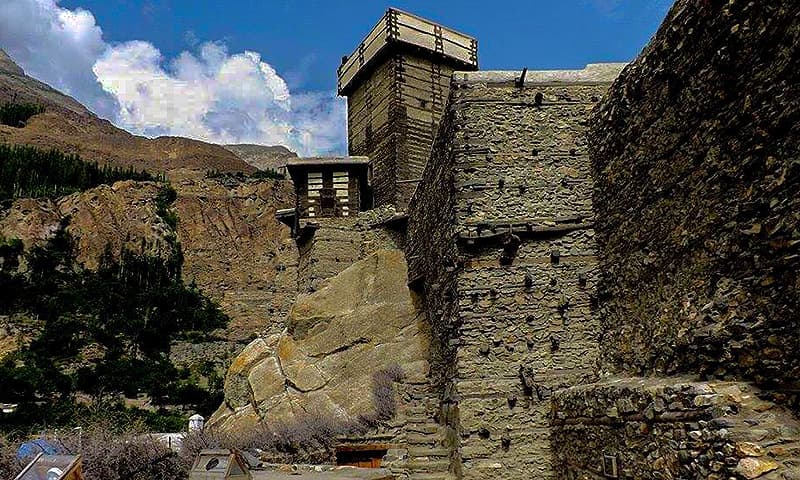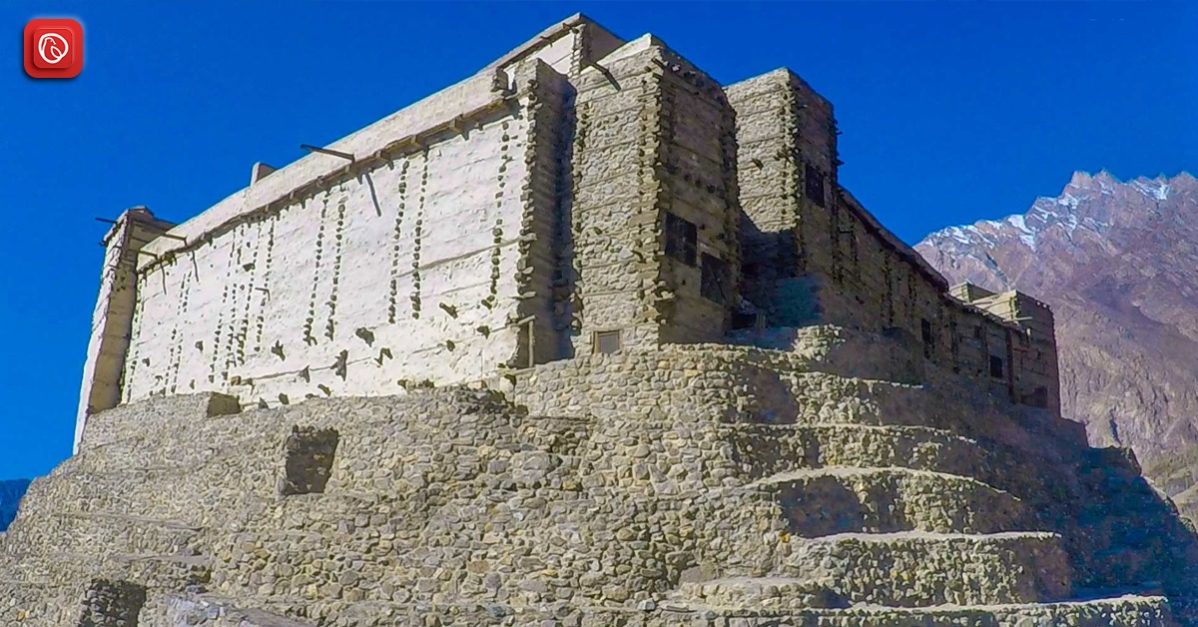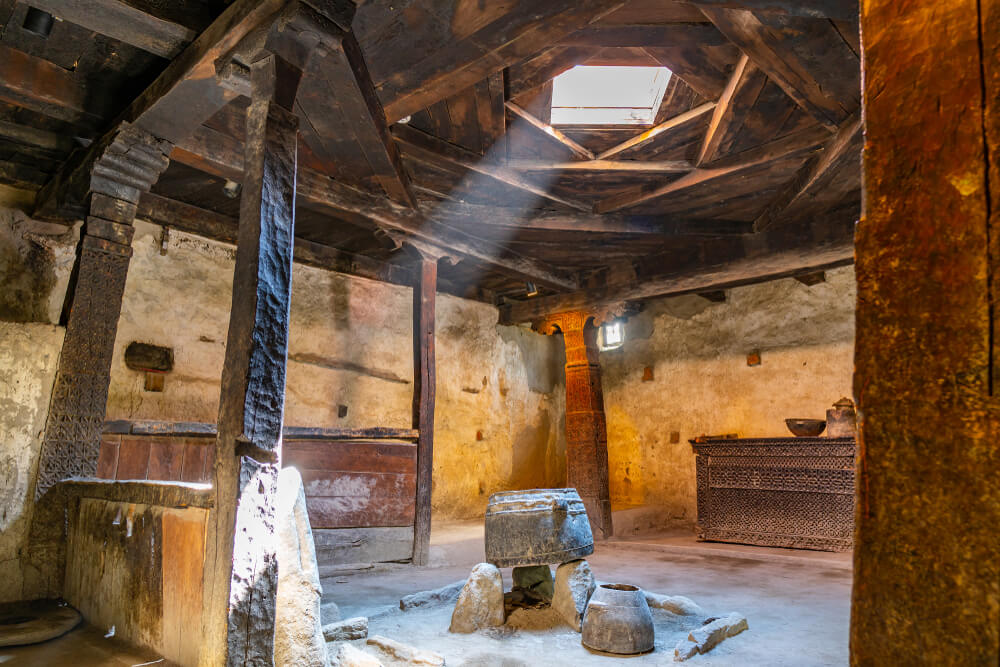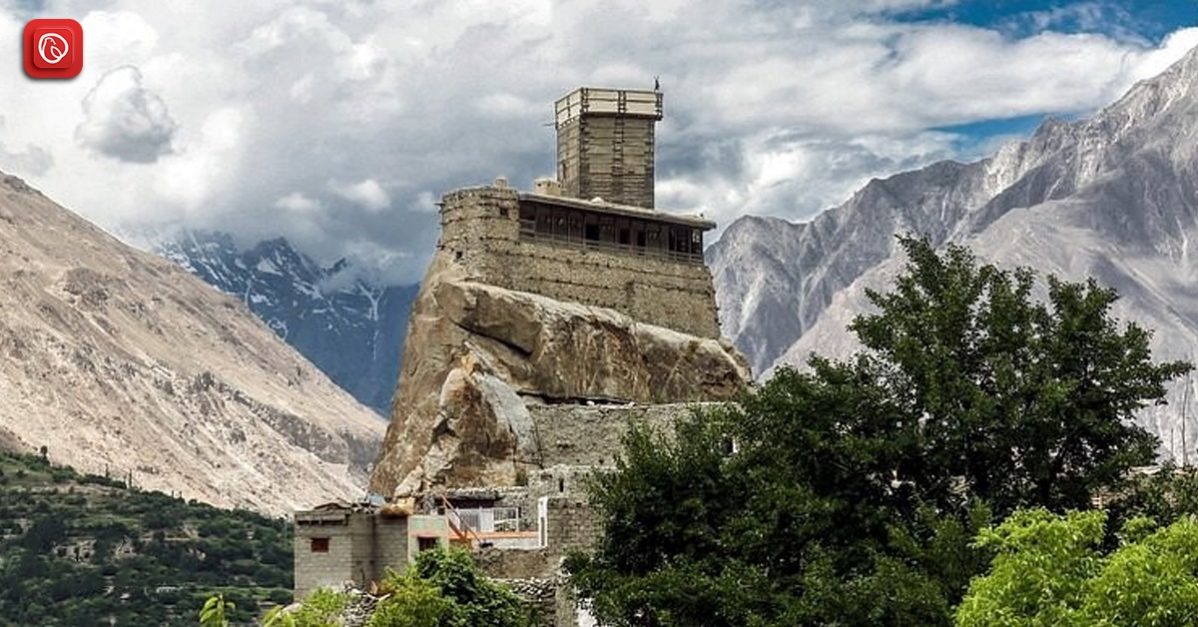Altit Fort is one of the ancient buildings in Hunza, a place in Pakistan. It has survived battles, attacks, and earthquakes. Local people say it’s where the Hunza realm began. Before 1972, Hunza was its own ruling area, but now it’s a part of Pakistan. The Fort is a unique old building in Hunza, and many tourists visit it in Gilgit-Baltistan. It’s among the historic forts in Pakistan.
Graana.com has gathered everything you need to know about Altit Fort Hunza, including its location, history and more.
History

Altit Fort is an ancient fort that’s 900 years old. It’s in the Hunza Valley in Northern Pakistan. A leader called the Mir of Hunza built it in the 11th century, and his family lived there until the 16th century. The fort saw many important events like wars and significant movements of people.
In the 16th century, Mir and his family moved to another fort nearby called Baltit Fort. After that, Altit Fort was left empty for a long time and got really old. But in the 1990s, people fixed it and made it pleasant again. Altit Fort, especially the Shikari Tower, is very old, about 1100 years old. It’s the oldest important place in Gilgit-Baltistan.
People in Altit are thought to be from a group called the white Huns, but there hasn’t been a lot of research on this. While there are different ideas about where they came from, the local people really value their heritage. People believe the white Huns brought Bruchiski to the area in 47 A.D. However, there needs to be proof connecting Burushaski to any language spoken today.
Village Of Huns
According to a story, Altit village, located in Pakistan’s Gilgit-Baltistan region, was once known as Hunukushal, which translates to “village of Huns.” It is believed that the Huns migrated from the Huang-Ho Valley in China and settled in the area many centuries ago.
Over time, the name of the village changed to Broshal, which means “village of Burushaski speakers.” The people of the village used to follow Buddhism and Hinduism and believed in spirits until they were introduced to Islam in the 15th century.
In the 1830s, Altit village saw a significant shift in religious beliefs, as many of its inhabitants embraced the Ismaili sect of Islam. This transformation brought about changes not only in the religious practices of the people but also in their social and cultural customs.
Today, Altit village is a melting pot of different cultures and religions, with a unique blend of ancient traditions and modern influences. Despite the passing of time, the village has managed to preserve its rich cultural heritage, which continues to fascinate and inspire visitors from all walks of life.
Altit Fort Architecture

Altit Fort’s design mixes styles from Tibet, Central Asia, and Islamic traditions. It’s built on a big rock and has a great view of the Hunza River and the mountains nearby. The fort has two parts: the lower part has a mosque, a special house for important guests, and places for animals. The upper part is where the Mirs and their families lived. The fort is made from stone and wood found nearby and shows how people-built things in the olden days.
Importance of Altit Fort
Altit Fort is more than just an old place – it’s also a centre for the local culture. The people here have kept their traditions and crafts alive. The fort holds cultural events, like the yearly Altit Fort festival. People from everywhere come to enjoy it. The festival is all about celebrating the area’s culture with dancing, music, and tasty traditional food.
Location
You can find Altit Fort in Altit town, near Karim Abad city, in Gilgit Baltistan, northern Pakistan. It’s a significant historical site and shows the influence of Tibetan architecture.
Ticket Price and Timing
To explore the fascinating history of Altit Fort in Hunza Valley, you need to buy tickets first. For local visitors, the ticket costs around PKR 500 to 600, and for foreigners, it’s PKR 1000.
The fort is open every day of the week, but the opening hours change a bit in summer and winter. In summer, it’s open from 9 am to 6 pm, and in winter, it’s open from 9 am to 5 pm.
Attractions
A big reason why people love Altit Fort in Gilgit Baltistan is the amazing view it offers of the Karakoram highway and the beautiful Hunza Valley. Being up high, you get to see all this stunning scenery. It’s like a paradise for those who enjoy nature because beauty can mean different things to different people. If you appreciate the beauty of nature, visiting this incredible place is always exciting. Here are some popular attractions in Altit Fort:
Security Room
When you step into the fort, the first thing you see is the guard room, raised on pillars. Inside, there’s a tiny square space on the ground where the Mirs (leaders) of Altit Fort stored wine before Islam came to Hunza Valley.
Meeting Hall
Next is the meeting hall. Here, the king of Hunza once addressed essential matters with influential people. They held important meetings here, discussing the state’s important issues.
Mosque
On the fort’s rooftop, there’s an ancient mosque built almost 400 years ago after Islam came to Gilgit Baltistan.
Jail
Among other rooms, there’s an underground jail where the authorised people kept prisoners and people who rebelled against the state. It was a dark, poorly ventilated place.
Living Room
There’s a living room where the king and queen lived. Inside, there’s a fireplace. In the same room, there’s a sundial that people used to tell time before clocks existed. There’s also a big box where royals stored food like wheat, rice, and dry fruits.
Safety Room
Right in front of the jail, there’s another room called the safety room. During wars, the rulers kept royal women and children here for safety. There are small openings in the walls where defenders used to shoot arrows at enemies.
View of KKH
From the rooftop of Altit Fort, one can see the KKH. It winds through the mountains and the breathtaking Hunza River. It’s an amazing sight, especially for those who love nature.
Shahi Hamam (Bathhouse)
Near the living room, there’s an old underground toilet and bathhouse used by the Mirs and their wives.
Sophisticated Woodwork
The whole fort is made of wood to withstand earthquakes. The wooden parts can move but keep the fort standing. Individuals from old times carved symbols connected to Buddhism on wooden pillars.
Pots Used by the Royal Family
There’s a dining room with pots made from special rocks for cooking. In ancient times, people used these pots as there was no metal available.
Standing Grave of Prince Ali Khan
In the safety room, there’s a standing grave that tells a sad story. It’s about a prince named Ali Khan who rebelled against his older brother for the kingdom. His brother buried him alive. His remains are still in Altit Fort.
Museum
A small museum was made in the fort in 1891. It has pictures of an army colonel from 1932.
Royal Kitchen

There’s an old pot in the living room used by the royal family for cooking. There’s also a fireplace for cooking. In the past, people preferred having just one room for both kitchen and bedroom.
Shikari Tower
The Mirs built a tower on top of Altit Fort to watch the region. From there, they could see all the mountains and the Hunza River. This tower was also used to keep an eye on enemies; sometimes, prisoners were thrown from it into the Hunza River as punishment.
View of Hunza River
From the top of Altit Fort, you can see the beautiful Hunza River of Gilgit Baltistan. It’s formed by different rivers joining together and later falls into Attabad Lake. The Karakoram Highway runs alongside the Hunza River. It’s a breathtaking sight.
FAQs
Q1: What is Altit Fort in Hunza known for?
A1: Altit Fort in Hunza is renowned for its historical significance and stunning architectural design, blending Tibetan, Central Asian, and Islamic styles. It stands as a testament to the region’s rich cultural heritage.
Q2: What are the main attractions inside Altit Fort?
A2: Inside Altit Fort, visitors can explore various rooms, including the guard room, conference hall, subterranean jail, and the living quarters of the royals. There are also unique features like the Shahi Hamam (bathhouse), a standing grave, and a museum displaying historical artefacts.
Q3: What is the significance of the Shikari Tower at Altit Fort?
A3: The Shikari Tower at Altit Fort served as a strategic watchtower, allowing defenders to monitor the surrounding region. It was also used to keep an eye on enemies, and prisoners were sometimes thrown from the tower into the Hunza River as a punishment.
Q4: Is there a museum inside Altit Fort?
A4: Yes, there is a museum inside Altit Fort. Established in 1891, the museum showcases historical artefacts and images, offering visitors insights into the region’s past.
Q5: What is the view like from Altit Fort?
A5: Altit Fort offers breathtaking views of the Karakoram Highway, winding through the mountains alongside the beautiful Hunza River. Visitors can also enjoy panoramic views of the Hunza River and the surrounding mountains from the fort’s elevated position.
Q6: What are the opening hours and ticket prices for Altit Fort?
A6: Altit Fort is open every day, with slight variations in timings during summer and winter. In summer, it opens at 9 am and closes at 6 pm, while in winter, it closes at 5 pm. The entry ticket costs around PKR 500 to 600 for locals and PKR 1000 for foreigners.
Q7: Can visitors explore the living quarters of the royals inside Altit Fort?
A7: Yes, visitors can explore the living quarters of the royals inside Altit Fort. These rooms provide a glimpse into the lifestyle and history of the royal family who once resided there.
Q8: What is the historical significance of the Standing Grave of Prince Ali Khan inside Altit Fort?
A8: The Standing Grave of Prince Ali Khan inside Altit Fort tells a tragic tale from the region’s history. Prince Ali Khan rebelled against his elder brother for the kingdom’s throne and was buried alive as a punishment. His remains are preserved within the fort, serving as a historical reminder.
Q9: Is there parking available near Altit Fort for visitors?
A9: Yes, there is parking available near Altit Fort for visitors. Tourists can park their vehicles conveniently and explore the fort and its surroundings.
Q10 : Altit Fort Built by Which Family?
Altit fort was built by The Mirs, towering over the Hunza Valley since the 11th century, Altit Fort stands as a testament to the power of the Mirs of Hunza.
Follow Graana blog to learn more about schools in Hunza.




